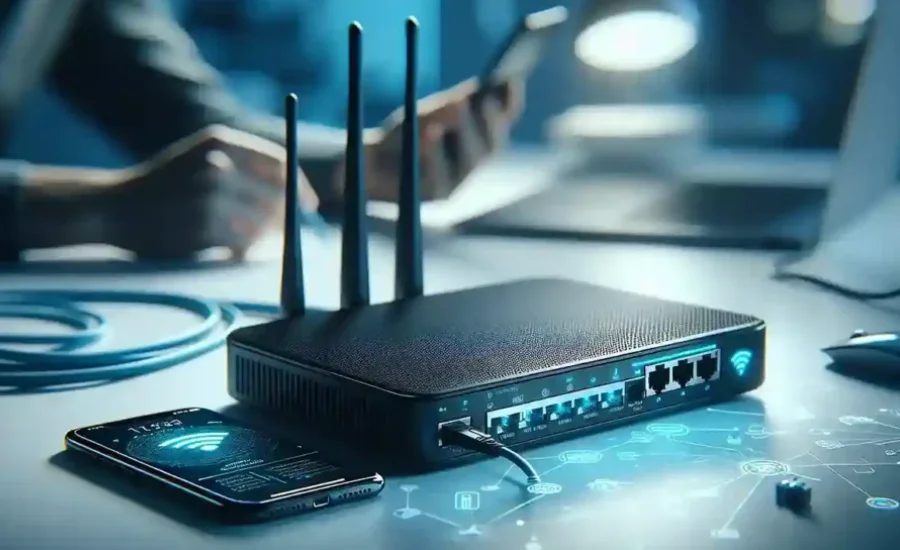198.168.11.188.5000, Recognizing, Decoding, Distinguishing, Private & More
Introduction To 198.168.11.188.5000
In the realm of network management, the addresses 198.168.11.188:5000 and 198.168.11.188:5001 serve as pivotal gateways for router configuration and administration. Understanding these addresses is essential for both novice and seasoned network administrators, as they facilitate access to the router’s settings, enabling users to tailor their network environment according to specific needs. Mastery of these configurations is vital for establishing a secure and efficient network.
This comprehensive guide aims to empower users with the knowledge required to effectively utilize the addresses 198.168.11.188:5000 and 198.168.11.188:5001. We will commence with an overview of the significance of this particular IP address, followed by a preparatory checklist designed to streamline the configuration process. This checklist will include essential steps that users should take prior to accessing the router settings, ensuring a smooth and efficient setup.
Once the preparation phase is complete, we will delve into the process of accessing the router’s administration panel. This section will cover the steps necessary to log in, including default credentials and tips for securing your login information. Understanding the interface of the administration panel is crucial, as it allows users to navigate through various settings that can significantly impact network performance.
Next, we will introduce key configurations that are essential for optimizing your router’s performance. This includes adjusting settings related to bandwidth allocation, security protocols, and network traffic management. By fine-tuning these configurations, users can enhance their network’s stability and speed, ensuring a seamless online experience.
Additionally, we will provide practical tips aimed at boosting overall network efficiency. These suggestions may include optimizing Wi-Fi signal strength, managing connected devices, and implementing regular firmware updates to keep the router functioning at its best. Such proactive measures are vital for maximizing the router’s capabilities and prolonging its lifespan.
In conclusion, a thorough understanding of the addresses 198.168.11.188:5000 and 198.168.11.188:5001, combined with strategic configurations and maintenance practices, will empower users to create a robust and reliable network environment. By following this guide, users can confidently navigate the complexities of router settings and ensure their network operates at optimal efficiency. In this article we;ll read about 198.168.11.188.5000.
Recognizing the IP address 198.168.11.188.5000’s Router Configuration Value

The IP address 198.168.11.188:5000 plays a crucial role in router configurations. Understanding the structure of an IP address, particularly how it differs from public IP addresses, is essential for grasping its significance in network management.
Typically, private IP addresses like 198.168.11.188 are utilized within local networks, allowing devices to communicate effectively without being exposed to the broader internet. This distinction is vital for maintaining security and efficient traffic management within a home or office network.
By gaining a deeper insight into the functionality of 198.168.11.188:5000 and its counterpart 198.168.11.188:5001, users can address common misconceptions about these addresses. This knowledge equips network administrators with the tools needed to navigate and optimize their router settings effectively, leading to improved network performance and stability.
In summary, comprehending the intricacies of these IP addresses enhances one’s ability to manage networks proficiently, fostering a more secure and efficient digital environment.
Decoding the Structure of an IP Address
An IP address consists of four octets, each made up of eight bits. These bits represent binary numbers that can be converted into decimal values ranging from 0 to 255. Taking the address 198.168.11.188:5000 as an example, we see the four primary octets: 198, 168, 11, and 188. Notably, the segment .5000 does not adhere to the standard IPv4 format; rather, it likely indicates a specific port number.
Each octet within an IP address plays a crucial role in identifying networks and devices. The first octet typically defines the address class, while the remaining octets provide further details regarding the specific network and the host within that network. This organized structure is essential for efficient data routing and seamless communication across various networks, ensuring that information reaches its intended destination without delay. Understanding this framework not only aids in effective network management but also enhances overall connectivity and performance in digital environments.
Distinguishing Private IP Addresses from Public IP Addresses
The addresses 198.168.11.188:5000 and 198.168.11.188:5001 are examples of private IP addresses, which serve distinct purposes compared to public IP addresses. Private IPs operate within local networks and are not directly accessible from the internet, offering several significant advantages:
Enhanced Security: By keeping internal communications separate from the public internet, private IP addresses reduce the risk of exposure to external threats, enhancing overall network security.
Address Conservation: They allow multiple devices within a local network to connect through a single public IP address using Network Address Translation (NAT). This optimization helps in conserving the limited pool of available public IP addresses.
Network Segmentation: Private IPs enable the creation of subnets within a larger network, improving management efficiency and enhancing security protocols.
In contrast, public IP addresses are unique identifiers that are globally routable on the internet. These addresses are assigned by Internet Service Providers (ISPs) and are crucial for locating devices or networks across the public internet, facilitating seamless communication and data exchange between different networks.
Understanding Private and Public IP Addresses

Private IP addresses, such as 198.168.11.188:5000 and 198.168.11.188:5001, serve distinct purposes compared to public IP addresses. These private addresses are restricted to local networks and cannot be accessed directly from the internet, offering several notable benefits:
Enhanced Security: Private IP addresses reduce the possibility of unwanted access by separating internal network communications from the public internet. This acts as a barrier against outside threats.
Effective Address Utilization: Network Address Translation (NAT), a technique used by private IPs, enables several devices to share a single public IP address. This technique preserves the restricted public address space and makes the best use of the IP addresses that are available.
Improved Network Structure: Private IP addresses enable the establishment of subnets within larger networks, which enhances network management and bolsters security measures.
In contrast, public IP addresses are unique identifiers that can be routed on the internet. Assigned by Internet Service Providers (ISPs), these addresses are essential for identifying devices and networks within the vast public internet, ensuring smooth and effective communication across diverse networks.
Clarifying Misconceptions About Private IP Addresses
Private IP addresses, such as 198.168.11.188:5000 and 198.168.11.188:5001, often come with several misconceptions that can hinder effective network management:
Private IPs Are Never Publicly Visible: While private IP addresses are not designed to be routable on the internet, they can sometimes appear in traceroute outputs or email headers due to specific internal configurations.
DNS Servers Cannot Resolve Private IPs: Internal DNS servers can indeed resolve domain names to private IP addresses, particularly within local networks.
Private IP Ranges Ensure Security: A network’s total setup and security protocols, not just the range of private IP addresses it uses, determine its level of security.
Various Private IP Ranges Provide Various Levels of Security: Regardless of whether a private IP range is 10.x.x.x, 172.16.x.x, or 192.168.x.x, there is no intrinsic security advantage connected to any of them.
IP conflicts are automatically avoided by VPN connections: Conflicts that need to be manually fixed may arise when you connect to a VPN that uses the same private IP range as your local network.
Users can maximize their utilization of addresses like 198.168.11.188:5000 or 198.168.11.188:5001 during router setting by dispelling these myths. Rather than presumptive security benefits, choosing a private IP range should be based on particular network requirements.
Preparing for Router Configuration: Essential Steps
Before diving into router configuration, it’s vital to ensure your internet connection is functioning correctly. A reliable connection is crucial for a seamless setup. To check your connectivity, connect a computer directly to the modem or gateway provided by your Internet Service Provider (ISP). If your computer detects an active internet connection, you can proceed with the router setup.
Additionally, confirm that all necessary cables are properly connected. This includes the power cable and Ethernet cables, ensuring they are securely plugged in and free from any damage.
Importance of Backing Up Your Router Settings

Prior to making any changes, it’s essential to back up your existing network configuration. This precaution can save significant time and effort if complications arise during setup. To back up your router’s settings, follow these steps:
Access your router’s admin portal by entering the device’s IP address in your web browser.
Navigate to the settings menu and find an option labeled “Backup and Restore” or similar.
Click the “Backup” or “Save Configuration” button to download a file containing your current settings.
Store this file securely on your computer or an external storage device.
Having a backup allows you to experiment with new configurations confidently. If issues occur, you can quickly revert to your previous settings. It’s wise to create regular backups, particularly before implementing significant changes to your network.
By following this pre-configuration checklist, you’ll be well-prepared to configure your router using addresses like 198.168.11.188:5000 or 198.168.11.188:5001. These preparatory steps are designed to enhance your setup experience and minimize potential problems down the line.
FAQs on Private IP Addresses and Router Configuration
1. What are private IP addresses?
Private IP addresses, such as 198.168.11.188, are used within local networks. They allow devices like computers and printers to communicate with each other without being exposed to the internet. These addresses are not routable on the public internet, which helps maintain security.
2. How do private IP addresses differ from public IP addresses?
Internet service providers (ISPs) assign public IP addresses, which are used to identify devices connected to the internet.In contrast, private IP addresses are only valid within a local network and cannot be accessed directly from outside that network.
3. Can private IP addresses be visible on the internet?
While private IP addresses aren’t meant to be accessible from the internet, they can sometimes appear in certain situations, such as in traceroute outputs or email headers, depending on network configurations.
4. Do I need to worry about security with private IP addresses?
While using private IP addresses enhances security by keeping internal communications separate from the internet, the overall security of your network depends more on your network’s configuration and security measures rather than the specific IP address range used.
5. What should I do before configuring my router?
Before configuring your router, make sure your internet connection is working properly by connecting a device directly to your modem. Also, ensure that all cables (power and Ethernet) are securely connected and in good condition.
6. Why is backing up my router settings important?
Backing up your router settings before making any changes is crucial. If something goes wrong during the configuration, you can quickly restore your router to its previous state, saving time and hassle.
7. How can I back up my router settings?
To back up your router settings, log in to your router’s admin portal using its IP address. Look for a “Backup” or “Save Configuration” option in the settings menu, and download the configuration file to your computer or an external storage device.
8. What are some key settings I should adjust on my router?
Important settings to consider adjusting include bandwidth allocation, security protocols (like Wi-Fi encryption), and network traffic management. Fine-tuning these settings can improve your network’s performance and stability.
9. How can I optimize my network’s performance?
To boost network efficiency, consider strategies like enhancing Wi-Fi signal strength, managing connected devices, and regularly updating your router’s firmware to keep it functioning optimally.
10. What should I do if I encounter issues while configuring my router?
If you face problems during router configuration, refer to your backup settings to restore the previous configuration. You can also consult the router’s user manual or reach out to your ISP for assistance.
Final Words
In conclusion, successful network management requires a grasp of the significance of private IP addresses such as 198.168.11.188:5000 and 198.168.11.188:5001. By keeping your internal network separate from the public internet, these addresses are essential for improving overall security and facilitating effective device communication.
Make sure all required wires are connected correctly and your internet connection is dependable before beginning router configuration. To prevent losing your configurations in the event of an error, always make a backup of your current settings before making any changes.
After you’re configured, spend some time examining important parameters like bandwidth allotment and security protocols that might improve the functionality of your router. Frequent upkeep, such as firmware upgrades and device monitoring, will keep your network.
For more Information About Technology visit francherway






